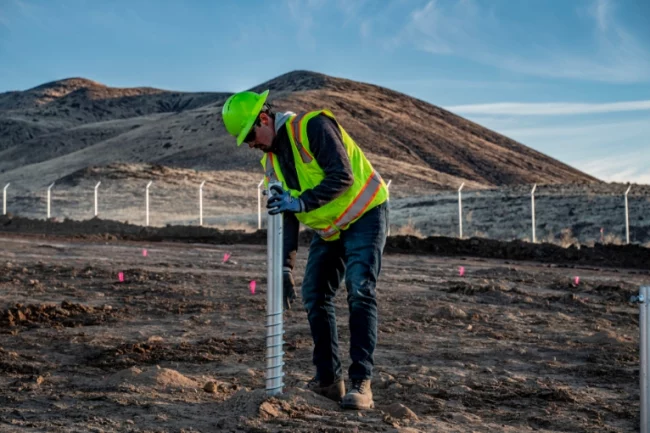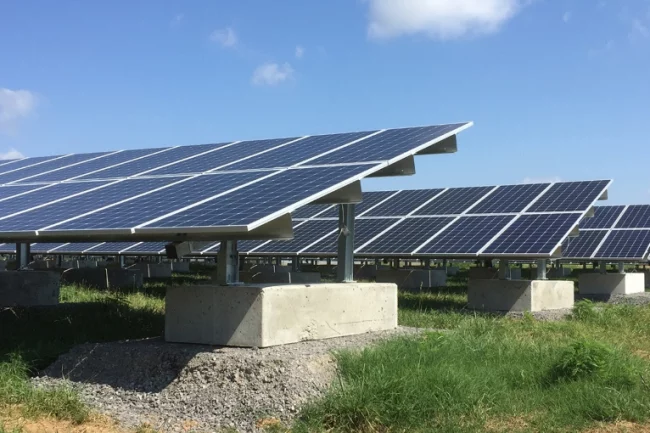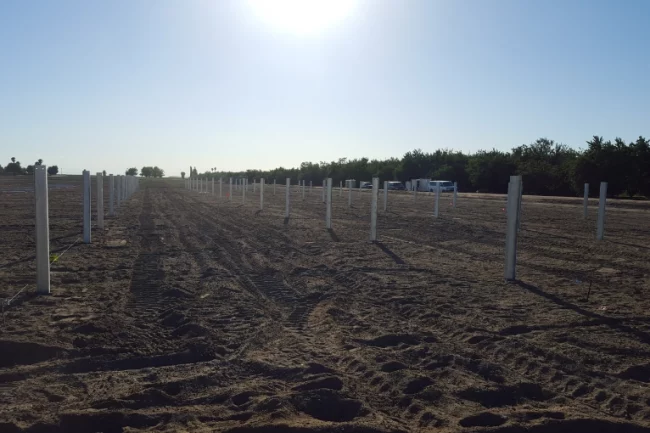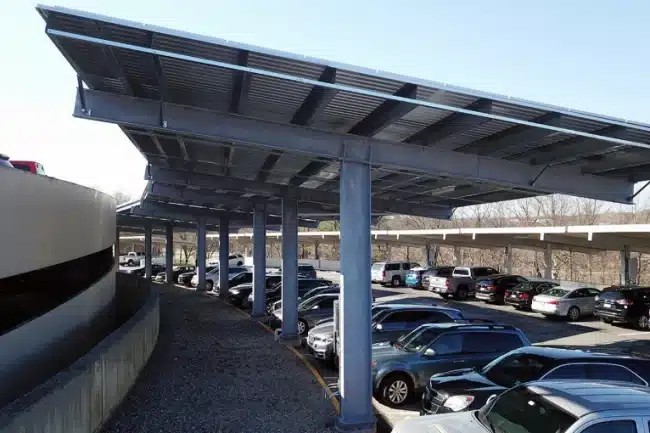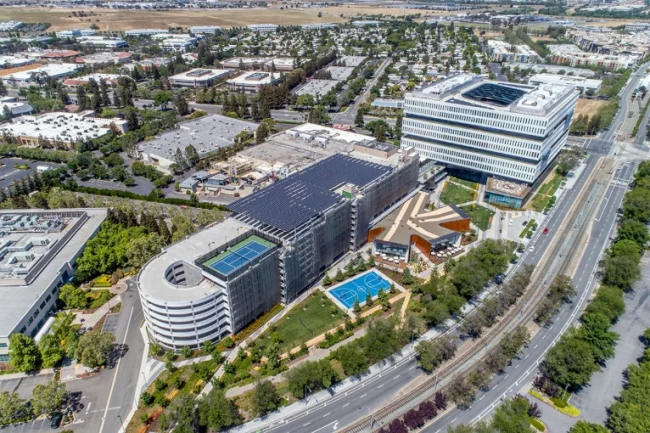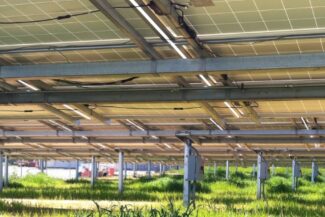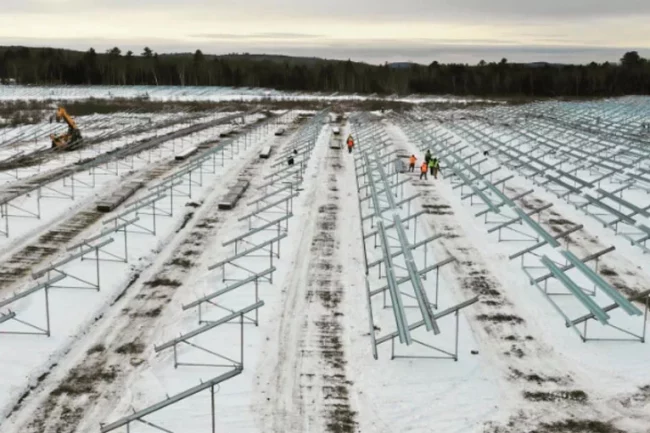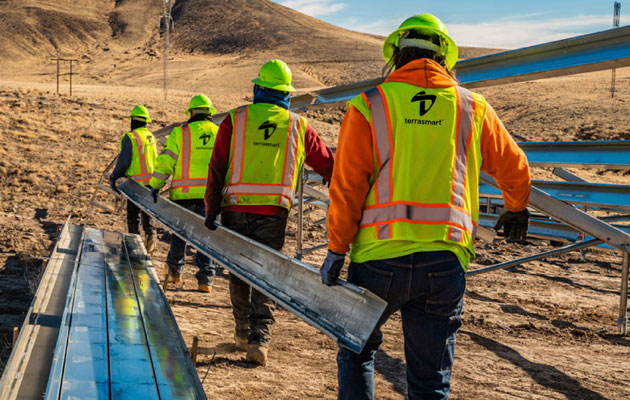Working with Terrasmart has always proven to be effective in terms of maintaining a safe jobsite. Their team, from safety director to project manager, superintendents, and field personnel, all embrace the utility-scale safety requirements and are well prepared to execute thoughtfully planned solutions to build our projects.
Jason Kelts, Health & Safety Director at Sun Tribe
By Sam Decelle, Operations Manager – Tracker Projects, Terrasmart
When Sun Tribe needed a racking partner for a mighty solar plant in Virginia, the C&I and utility-scale EPC turned to Terrasmart to design and build the single-axis tracking system on what was already a tight schedule.
With safety as one of the EPC’s core values, Sun Tribe looked to Terrasmart to help reach new heights in safe solar construction.
The result: There was not a single injury incident among the 75+ workers who completed the solar project during a five month span.
What’s more, the effective collaboration between Terrasmart, Sun Tribe, and the utility resulted in project completion two weeks ahead of schedule.
A small part of a large effort
The project is one of many solar and energy storage projects across Virginia supporting nearly 4,200 clean energy jobs.
Terrasmart designed and performed the mechanical installation of the Virginia solar site using its iconic ground-screw foundations and TerraTrak, its single-axis tracker. To work seamlessly with ground screws, TerraTrak offers an A-frame design to double the strength of traditional pile foundations, redirecting loads toward favorable forces on the ground screws.
Terrasmart broke ground in March 2023 and completed the mechanical scope by mid-April.
Embracing safety to build new standards
The construction demanded exceptionally strict safety requirements. First, a comprehensive safety document mapped the project and prompted significant changes to Terrasmart’s standard operating procedures. The team faced various interpretations of protocols, consistently raising the bar for standards.
To meet the stringent requirements, Terrasmart adjusted its processes and eliminated situational risks that might lead to injuries. While it is impossible to predict accidents, safety became a daily topic of conversation, ensuring a secure work environment. Despite the monotonous nature of the job, Terrasmart prioritized safety without compromising the project’s schedule.
Weekly safety meetings with the Sun Tribe team were conducted to review the scope and ensure adherence to safety protocols.
Rather than relying on the usual daily job hazard analysis (JHA), the team conducted JHAs three times a day — morning, post-lunch, and before walking off the site at the end of the day.
This sometimes resulted in brief work pauses to address any safety concerns that arose during the construction process. For example: To mitigate tripping hazards posed by ground screws, caution tape was added to the top of each bolt, increasing visibility, and minimizing risks.
Safety in action: Innovative measures
Meeting the safety protocols required some fundamental changes to Terrasmart’s operations and equipment, including:
1) New height requirements
No worker could climb up more than four feet without additional harnesses and safety gear. Because the Terrasmart tracker is more than eight feet tall, installers had to be tied off using self-retracting lifeline harnesses. This retractable lifeline is a fall arresting device with a spring-loaded lanyard that attaches to a worker’s harness and remains taut during movement, activating only when a force is pulled on the lifeline, preventing a fall before it occurs. This mechanism eliminates trip hazards commonly presented by traditional, slack lanyards.
2) Equipment retrofits
Novel equipment attachments were used to move materials on the site. The project’s safety protocols required unique lull and skid gear attachments to secure pieces of the system during construction. For example, while typical skid gear uses two- to six-foot long forks to move material, these new protocols required an additional clamp to secure material to the fork.
Despite this being Terrasmart’s first time using the equipment, the attachment not only secured transported materials but helped increase torque tube installation speed. A process that normally would require a week was completed in only three days.
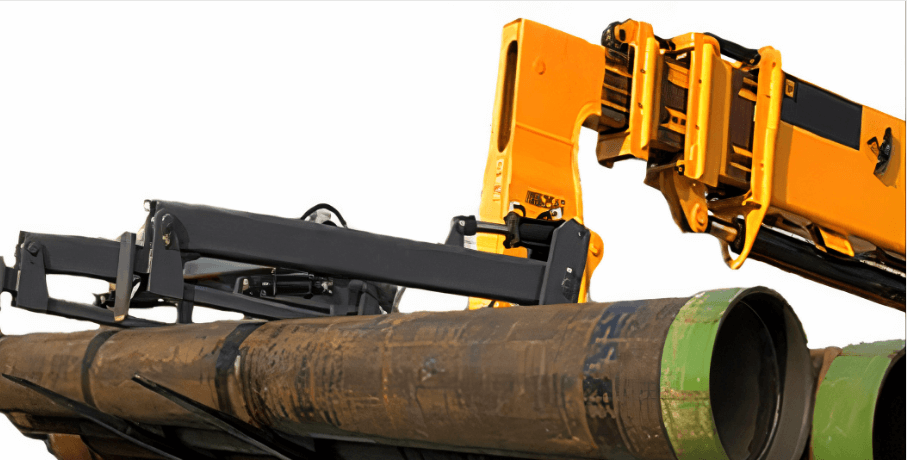
Safety leadership onsite
Project Superintendent Michael Chapman was an important contributor to our safety success onsite. His attention to detail and ability to meet the site’s safety requirements was so notable that Sun Tribe asked him to stay on to manage other subcontractors contracted through Terrasmart following our project’s completion.
“Michael was instrumental in ensuring the safety of this project. He met with us daily, was extremely proactive and identified processes that needed to be modified on site. In addition, Michael was a champion for safety and ensured safety processes and protocols were communicated to the full team throughout the scope of work,” said Jason Kelts, a board-certified safety professional and environmental, health and safety director at Sun Tribe.
Safety lessons steer Terrasmart toward future improvements
Our team’s heightened focus on safety significantly influenced productivity while maintaining consistent levels of quality and, at times, even increasing the pace of our work. Prioritizing safety ultimately sped the project’s successful completion and upheld stringent standards.
The emphasis on safety through regular meetings, increased hazard analysis, and heightened awareness lead to its successful completion well ahead of schedule.
“Working with Terrasmart has always proven to be effective in terms of maintaining a safe jobsite,” says Kelts. “Their team, from safety director to project manager, superintendents, and field personnel, all embrace the utility-scale safety requirements and are well prepared to execute thoughtfully planned solutions to build our projects.”
We are now taking lessons from this project to assess new equipment features that allow for safer materials transport while increasing productivity. We are hopeful that our cost analysis will validate whether the man-hour labor savings can consistently outweigh the cost of equipment modifications.


